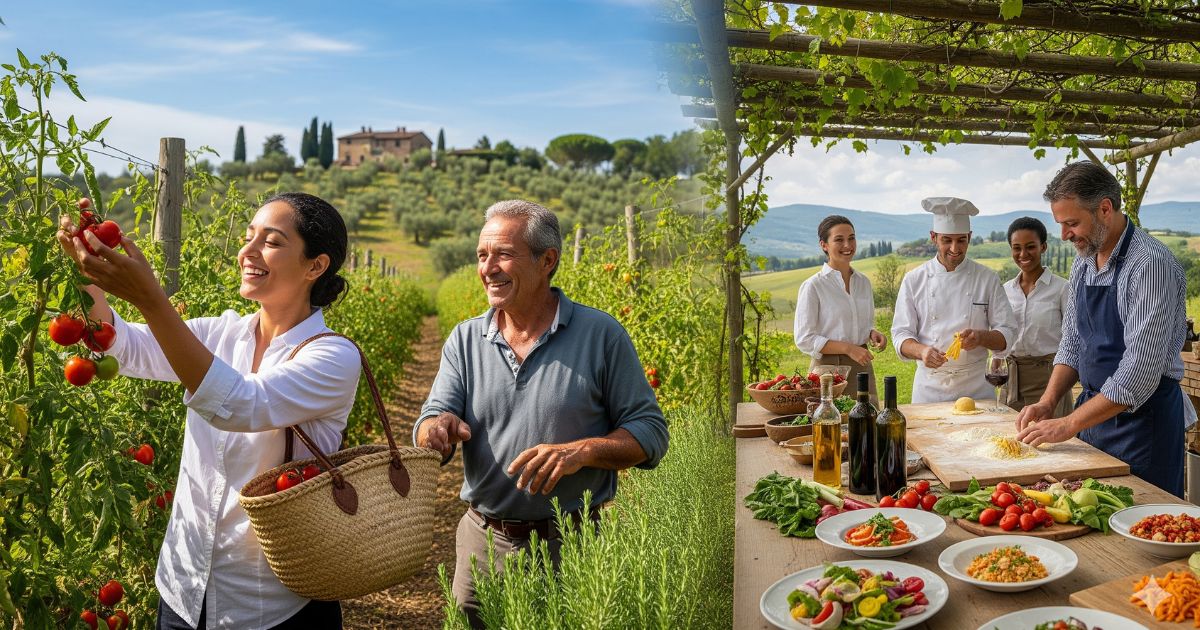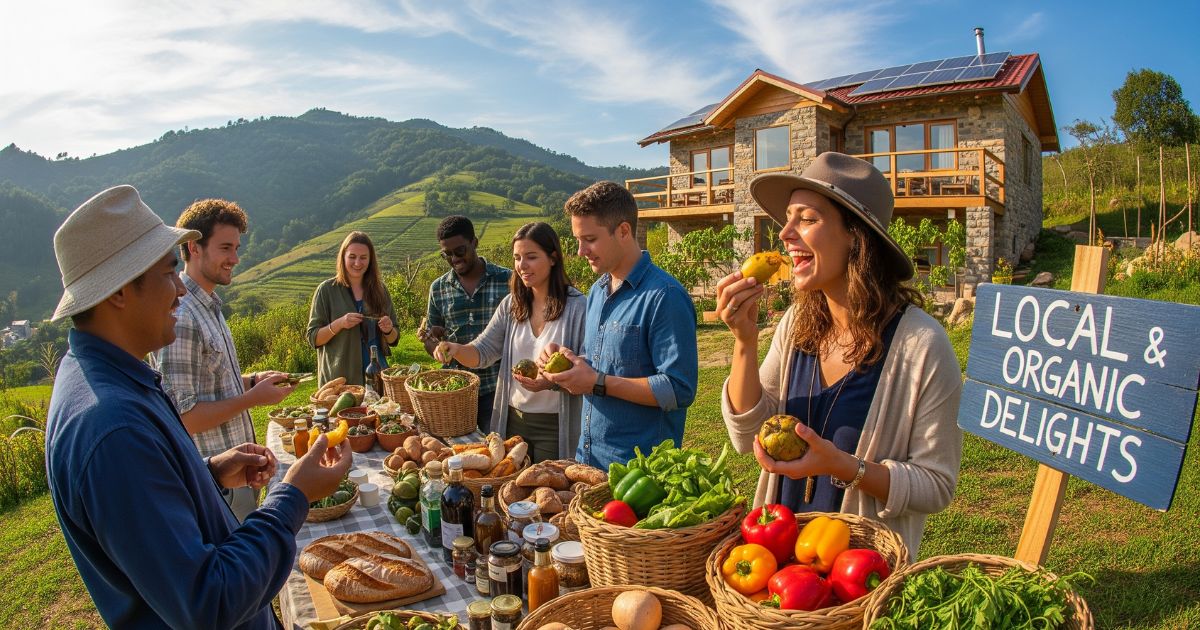
Food has always been one of the most exciting parts of travel. Every destination tells its story through flavors, traditions, and shared meals. Today, more travelers are embracing Culinary Journeys not just to taste delicious dishes but also to do so in a way that respects the planet. Sustainable culinary travel means supporting local farmers, choosing eco-conscious restaurants, and enjoying authentic experiences that leave a positive impact. It’s about savoring the world’s cuisines while keeping your footprint light—proving that mindful eating can make every trip richer and more meaningful.
In this comprehensive guide, we’ll show you how to savor authentic flavors around the globe while minimizing your ecological footprint and supporting local economies.
Why Sustainable Culinary Travel Matters
Traditional food tourism often prioritizes novelty over ethics. Tourists chase trendy eateries, buy exotic packaged snacks, and overload on plastic bottles—sometimes unaware of the environmental toll. Meanwhile, small-scale farmers, fishers, and artisans struggle to compete with industrial agriculture and mass-market souvenirs. Sustainable culinary travel shifts the focus from consumption to connection—celebrating local producers, respecting seasonal cycles, and reducing waste. The result? Richer experiences, healthier ecosystems, and stronger communities.
Planning Your Sustainable Food Tour

Preparation is key: a well-researched itinerary helps you make mindful choices on the road. Start by:
- Researching local specialties that rely on regional ingredients, like heirloom grains in Italy or endemic spices in Southeast Asia.
- Booking tours and workshops led by community cooperatives or certified eco-guides.
- Checking certifications: look for labels like Slow Food Presidia, Fairtrade, or MSC (Marine Stewardship Council) for seafood.
- Packing reusable items: utensils, water bottles, produce bags, and a lightweight food container can drastically cut single-use waste.
Aim for a balanced itinerary that mixes guided experiences with spontaneous local discoveries.
Top Destinations for Eco-Friendly Food Tourism
While sustainable food tourism is a global trend, some regions have gone the extra mile:
- Northern Italy: From the Piedmont vineyards championing biodynamic methods to Tuscany’s farm-stay olive harvests, Italy’s Slow Food movement put responsible gastronomy on the map.
- Japan: Seasonal kaiseki meals highlight locally foraged ingredients. Coastal communities offer sustainable sushi workshops that respect fish populations.
- Costa Rica: Known for eco-lodges offering chocolate and coffee plantation tours with fair-trade practices and reforestation projects.
- Morocco: Cooperative-run olive oil presses and argan cooperatives empower women producers, while farm-to-table riads serve tagines made from heritage grains.
- New Zealand: Maori-led food trails teach regenerative agriculture practices alongside traditional kai (food) experiences.
Embracing Farm-to-Table Experiences

One of the most impactful ways to connect food and place is by visiting working farms. Here’s how to make the most of these visits:
- Hands-on Workshops: Participate in cheese-making, olive-pressing, or vegetable harvesting. Learning the labor behind your meal fosters respect and gratitude.
- Stay on the Farm: Agritourism accommodations let you wake up to fresh produce and dine on ingredients you’ve helped cultivate.
- Meet the Farmers: Ask about crop rotations, pest management, and water conservation. Buying directly from producers keeps more revenue in local pockets.
Responsible Street Food Exploration
Street food captures the essence of a region’s flavors, but it can be a double-edged sword when hygiene and waste aren’t managed properly. To stay safe and sustainable:
- Choose stalls with a steady line of locals—fresh turnover often means lower risk.
- Carry hand sanitizer and bring your own reusable spoon or chopsticks.
- Decline single-use plastic bags; use your own tote or backpack for snacks.
- Support vendors who source ingredients from nearby markets or cooperatives.
Supporting Local Producers and Artisans
Beyond meals, your spending power can uplift entire villages. Look for:
- Farmers’ Markets: Seasonal produce often arrives directly from the field, with fewer intermediaries.
- Community-Owned Eateries: Profits reinvested into local projects, from education to infrastructure.
- Cooking Classes: Hosted by home cooks or nonprofit organizations teaching traditional recipes.
- Handcrafted Souvenirs: Choose spice blends, preserves, or breads made by social enterprises.
Eco-Friendly Dining Tips on the Road
Whether you’re dining at a five-star restaurant or a roadside café, small choices add up:
- Opt for restaurants that list ingredient origins on their menu.
- Ask if they compost kitchen scraps or recycle glass and paper.
- Choose water on tap where safe; skip bottled beverages when filtered water is available.
- Share large dishes to avoid food waste, or ask for a half-portion if menus allow.
Reducing Food Waste While Traveling
Globally, one-third of all food produced is wasted. As a traveler, you can make a difference by:
- Pre-ordering meals at salons or trains to minimize unpredictability.
- Storing leftovers in reusable containers instead of single-use take-out boxes.
- Donating unopened snacks or non-perishables to shelters or community fridges.
- Choosing all-you-can-eat buffets sparingly to avoid overloading your plate.
Offsetting Your Culinary Footprint
Even with sustainable practices, some impact is inevitable. Offset tools can help balance your carbon and water footprint:
- Carbon Offset Programs: Invest in verified reforestation or renewable energy projects tied to your air and ground travel.
- Water Restoration Credits: Support watershed protection initiatives in areas facing water scarcity.
- Local Conservation Fees: Some eco-lodges and farms channel a percentage of your stay toward habitat restoration.
Conclusion
A sustainable culinary journey transforms the way we engage with food and culture. By prioritizing local producers, reducing waste, and choosing eco-certified experiences, you’ll not only deepen your connection to each destination but also leave a positive legacy for communities and ecosystems. So pack your reusable cutlery, brush up on seasonal menus, and embark on a green food adventure that nourishes your body, mind, and the planet. For an even richer experience, consider exploring Agritourism, where farm-to-table dining, local markets, and hands-on food traditions bring sustainability and culture together.

















No Comments